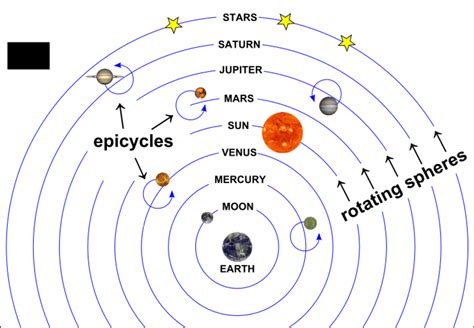
In the second century, Ptolemy’s Almagest let experts predict the movements of the stars for the first time, based on the belief that heavenly bodies, being heavenly, circled the earth in perfect circles, or in circles within circles (epicycles). It wasn’t true, but it worked, and its followers made it work for a thousand years. When new stars were found, they expanded the model to explain them, which made it more complex. This medieval standard model explained all the planets and stars, until a new one was found, and only fell when Kepler, Copernicus, Galileo, and Newton developed a causal model to replace it.
Scientists now see Ptolemy’s model as primitive, but it satisfied the experts of the day, just as the standard model does today, so it is interesting that both models are:
1. Descriptive. Both describe what is but don’t predict anything new. They summarize patterns, as equations do, but science isn’t just about description.
2. Based on free parameters. The medieval standard model let experts choose the free parameters of epicycle, eccentric, and equant to fit the facts, and the modern standard model lets them choose the free parameters of field, boson, and charge.
3. After the fact. The medieval standard model defined its epicycles after a new star was found, and the modern standard model bolts on a new field after a new force is found.
4. Barren. The medieval standard model couldn’t produce anything new, like Kepler’s laws, and the modern standard model is the same, so it can’t deduce that matter evolved from light.
5. Absurdly complex. Medieval astronomers tweaked their model until it became absurdly complex, just as today, the equations of string theory fill pages, even books.
6. Normative. The medieval standard model was the norm of its day, so any criticism of it was seen as an attack on tradition, just as now, any critique of today’s standard model is seen as an attack on physics itself (Smolin, 2006).
7. Invalid. We now know that the planets and stars don’t move in circles around the earth, so maybe virtual particles are unnecessary agents that don’t exist.
When the medieval church pressured Galileo to recant, they didn’t ask him to deny that the earth went around the sun, just to call it a fiction of mathematics not a reality description. Today, physicists call quantum theory a mathematical fiction of their own accord but what if quantum waves really exist, just as the earth really does go around the sun?
The scientific method has three steps: first it describes patterns, then it finds correlations, and finally it attributes causes (Rosenthal & Rosnow, 1991). The standard model is then a descriptive model that didn’t become a causal theory because physicists rejected quantum causes as imaginary. Ironically, Everett then fantasized about many worlds (Everett, 1957), and Witten built a mathematical castle in the air called M-theory, both of which led nowhere. It seems that the current standard model is a dead end in the history of science, just as the last standard model was.